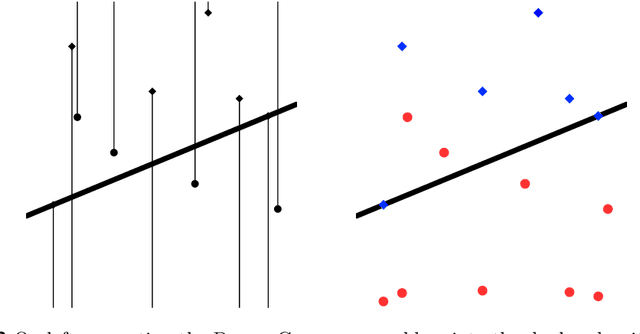Approximate Maximum Halfspace Discrepancy
Paper and Code
Jun 25, 2021

Consider the geometric range space $(X, \mathcal{H}_d)$ where $X \subset \mathbb{R}^d$ and $\mathcal{H}_d$ is the set of ranges defined by $d$-dimensional halfspaces. In this setting we consider that $X$ is the disjoint union of a red and blue set. For each halfspace $h \in \mathcal{H}_d$ define a function $\Phi(h)$ that measures the "difference" between the fraction of red and fraction of blue points which fall in the range $h$. In this context the maximum discrepancy problem is to find the $h^* = \arg \max_{h \in (X, \mathcal{H}_d)} \Phi(h)$. We aim to instead find an $\hat{h}$ such that $\Phi(h^*) - \Phi(\hat{h}) \le \varepsilon$. This is the central problem in linear classification for machine learning, in spatial scan statistics for spatial anomaly detection, and shows up in many other areas. We provide a solution for this problem in $O(|X| + (1/\varepsilon^d) \log^4 (1/\varepsilon))$ time, which improves polynomially over the previous best solutions. For $d=2$ we show that this is nearly tight through conditional lower bounds. For different classes of $\Phi$ we can either provide a $\Omega(|X|^{3/2 - o(1)})$ time lower bound for the exact solution with a reduction to APSP, or an $\Omega(|X| + 1/\varepsilon^{2-o(1)})$ lower bound for the approximate solution with a reduction to 3SUM. A key technical result is a $\varepsilon$-approximate halfspace range counting data structure of size $O(1/\varepsilon^d)$ with $O(\log (1/\varepsilon))$ query time, which we can build in $O(|X| + (1/\varepsilon^d) \log^4 (1/\varepsilon))$ time.
 Add to Chrome
Add to Chrome Add to Firefox
Add to Firefox Add to Edge
Add to Edge